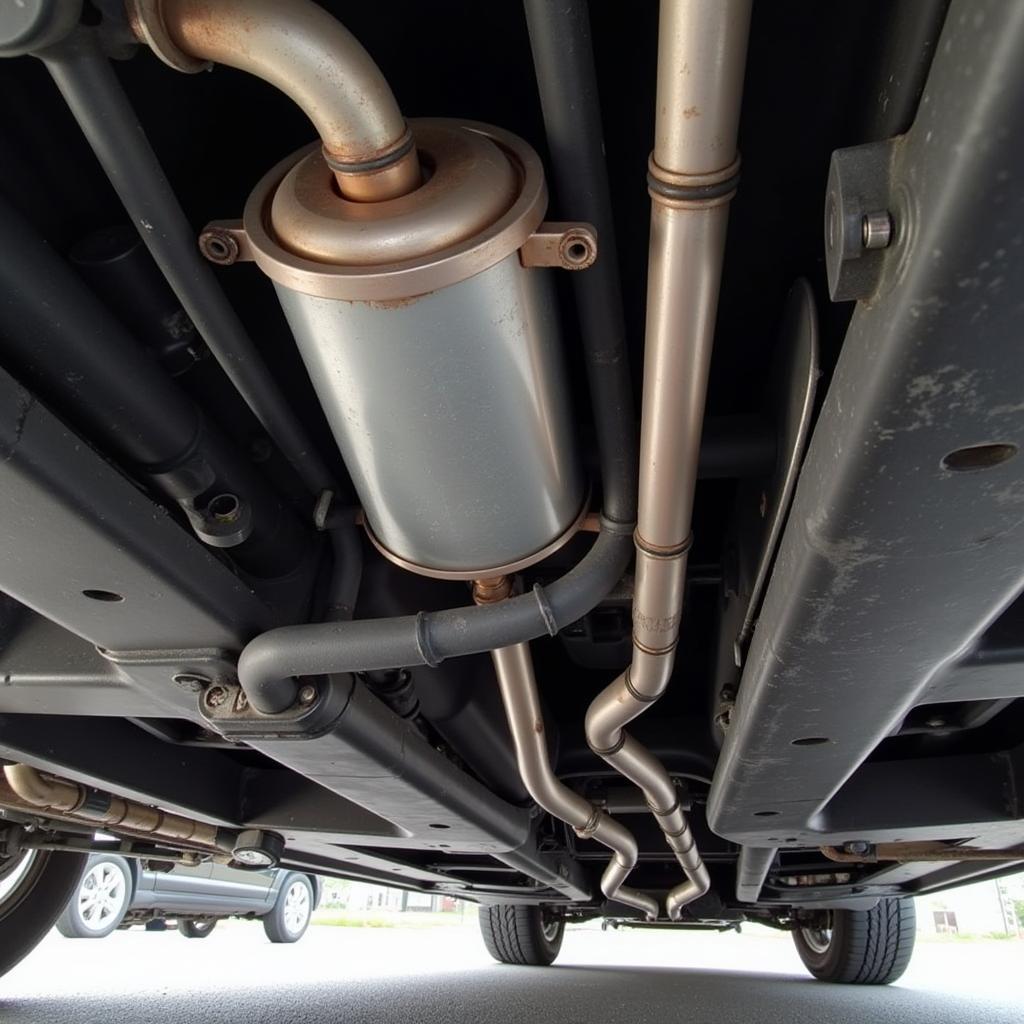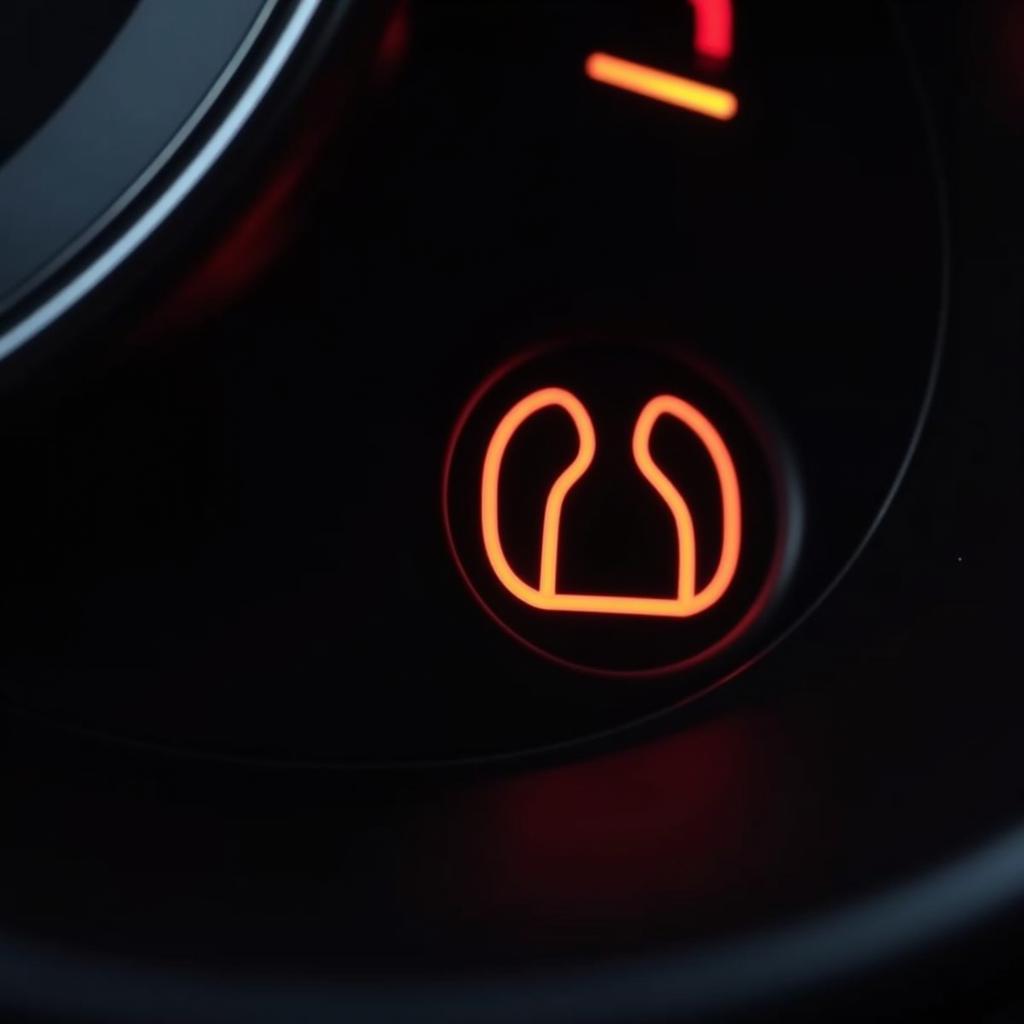The catalytic converter warning light on your Seat Alhambra is a common sight for many owners. This amber-colored light, often shaped like an engine outline with a diagonal line through it, can signal a range of issues with your vehicle’s emissions system. While it can be concerning to see this warning light illuminate on your dashboard, understanding its causes and potential solutions can help you address the problem effectively.
Understanding the Catalytic Converter’s Role
Before delving into the reasons behind the warning light, it’s crucial to grasp the function of the catalytic converter itself. This essential component of your Seat Alhambra’s exhaust system plays a vital role in reducing harmful emissions. It converts toxic gases, such as carbon monoxide, nitrogen oxides, and hydrocarbons, into less harmful substances like carbon dioxide, nitrogen, and water vapor. This conversion process is crucial for meeting environmental regulations and maintaining cleaner air quality.
 Seat Alhambra Catalytic Converter Location
Seat Alhambra Catalytic Converter Location
Common Causes of a Catalytic Converter Warning Light
A glowing catalytic converter warning light on your Seat Alhambra’s dashboard can indicate various issues, ranging in severity and complexity. Here are some of the most common culprits:
1. Faulty Oxygen Sensor(s)
Oxygen sensors, also known as O2 sensors, play a crucial role in monitoring the exhaust gases leaving the engine and relaying this information to the car’s computer, the Engine Control Unit (ECU). This data helps the ECU adjust the air-fuel mixture for optimal combustion efficiency and minimal emissions. A malfunctioning oxygen sensor can send inaccurate readings to the ECU, potentially leading to an incorrect air-fuel ratio and, consequently, an illuminated catalytic converter warning light.
2. Engine Misfire
An engine misfire occurs when the fuel-air mixture in one or more cylinders fails to ignite properly. This misfire can result in unburned fuel being dumped into the exhaust system, overwhelming the catalytic converter’s capacity to process these harmful emissions. The excessive heat generated by the unburned fuel can damage the delicate internal structure of the catalytic converter, triggering the warning light and potentially leading to costly repairs.
 Seat Alhambra Engine Misfire Spark Plugs
Seat Alhambra Engine Misfire Spark Plugs
3. Catalytic Converter Failure
While catalytic converters are designed to be durable, they are not indestructible. Over time, exposure to high temperatures, internal contamination from engine oil or coolant leaks, or physical damage can lead to their failure. When the catalytic converter can no longer effectively convert harmful emissions, the warning light will illuminate to alert you to the issue.
4. Leaky Exhaust System
A leak anywhere in the exhaust system, from the exhaust manifold to the tailpipe, can disrupt the flow of exhaust gases and impact the catalytic converter’s efficiency. These leaks can introduce fresh oxygen into the exhaust stream, confusing the oxygen sensors and leading to inaccurate readings. The ECU, receiving faulty information, may misinterpret the situation and trigger the catalytic converter warning light.
5. Faulty Catalytic Converter Wiring
Like any electrical component in your Seat Alhambra, the wiring and connectors associated with the catalytic converter and its related sensors can become damaged or corroded over time. This can lead to communication errors between the sensors, the ECU, and the catalytic converter itself, potentially resulting in the illumination of the warning light.
Diagnosing the Issue
Identifying the precise cause of the catalytic converter warning light requires a proper diagnosis, often involving specialized equipment and expertise. Here are some steps involved in diagnosing the issue:
- Reading the Diagnostic Trouble Codes (DTCs): A qualified mechanic will use a scan tool to retrieve the specific DTCs stored in your Seat Alhambra’s ECU. These codes provide valuable clues about the nature of the problem within the emissions system.
- Visual Inspection: A thorough visual inspection of the catalytic converter, exhaust system, and related components can reveal obvious signs of damage, such as cracks, leaks, or loose connections.
- Oxygen Sensor Testing: Mechanics can test the functionality of the oxygen sensors to ensure they are sending accurate signals to the ECU.
- Exhaust Back Pressure Test: This test measures the pressure in the exhaust system, helping to identify blockages that could be affecting the catalytic converter’s performance.
Potential Solutions and Repair Options
The appropriate course of action for addressing a catalytic converter warning light depends entirely on the underlying cause identified during the diagnostic process. Some potential solutions and repair options include:
-
Replacing Faulty Oxygen Sensors: If diagnosed as faulty, replacing the oxygen sensor(s) is a relatively straightforward and cost-effective repair that can often resolve the issue.
-
Addressing Engine Misfires: Resolving engine misfires is crucial to prevent further damage to the catalytic converter. This might involve replacing worn spark plugs, ignition coils, or addressing issues with fuel delivery or compression.
-
Repairing or Replacing the Catalytic Converter: In cases of a failed or severely damaged catalytic converter, repair might not be possible. Replacement with a new catalytic converter, while a more expensive option, is often necessary to restore proper emissions control and extinguish the warning light.
-
Fixing Exhaust Leaks: Repairing leaks in the exhaust system, whether through welding, sealing, or replacing damaged components, can restore proper exhaust flow and prevent further issues with the catalytic converter.
-
Repairing or Replacing Wiring Harnesses: If damaged or corroded wiring is identified, repairing or replacing the affected harnesses can re-establish proper communication within the emissions system.
Ignoring the Warning Light: A Costly Mistake
Ignoring a persistent catalytic converter warning light can lead to more severe problems and significantly higher repair costs down the road. A malfunctioning catalytic converter not only increases your vehicle’s emissions output but can also:
- Damage Other Components: A failing catalytic converter can create excessive heat, potentially damaging other exhaust system components or even affecting engine performance.
- Reduce Fuel Efficiency: A malfunctioning catalytic converter can disrupt the engine’s air-fuel ratio, leading to decreased fuel economy and increased running costs.
- Lead to MOT Failure: In many regions, a functioning catalytic converter is a legal requirement for passing emissions tests during a vehicle inspection (MOT).
Preventing Future Issues
While some catalytic converter issues are unavoidable due to wear and tear, proactive maintenance can significantly reduce the risk of encountering problems:
- Adhere to Regular Service Schedules: Following your Seat Alhambra’s recommended service intervals ensures timely inspections and replacements of critical components, including spark plugs, oxygen sensors, and air filters.
- Address Engine Issues Promptly: Ignoring engine misfires or performance problems can have detrimental effects on the catalytic converter.
- Use High-Quality Fuel and Oil: Using the recommended fuel and oil types for your Seat Alhambra can help minimize deposits and contamination that can affect the catalytic converter’s lifespan.
Conclusion
The catalytic converter warning light in your Seat Alhambra serves as a crucial indicator of potential issues within your vehicle’s emissions system. Addressing this warning light promptly and seeking professional diagnosis and repair is essential to protect both your vehicle’s health and the environment. By understanding the catalytic converter’s vital role and the potential causes of its malfunction, you can make informed decisions about maintaining your Seat Alhambra and ensuring its optimal performance for years to come.

